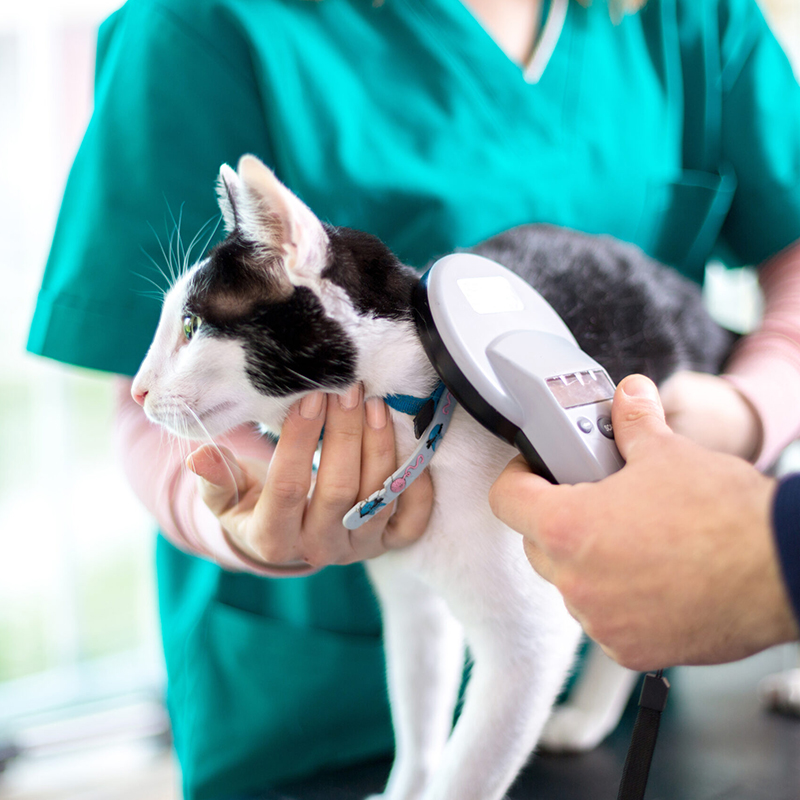Pet Microchipping
A dog or cat microchip is a small device about the size of a grain of rice implanted under your pet’s skin between the shoulder blades. This chip carries unique identification information linked to your contact details.
How Does Microchipping Work?
Pet microchipping is a straightforward procedure that takes only a few minutes. The microchip is inserted under your pet’s skin using a needle, similar to a vaccination. Each microchip has a unique identification number registered in a national pet recovery database and your contact information. Veterinary hospitals, animal shelters, and animal control offices across the country have electronic scanners that can detect and read these microchips.

The Microchip Implantation Process
The process of implanting a dog microchip is quick and safe. Here is what to expect:
- A small microchip, roughly the size of a grain of rice, is placed under the skin between your pet’s shoulder blades.
- The implantation procedure is similar to a routine vaccination and causes minimal discomfort to your pet.
- Once implanted, the microchip remains in place for the lifetime of your pet.
Benefits of Microchipping
Microchipping provides a reliable and permanent method of identifying your pet. Here are some key benefits:
- Permanent Identification: Unlike collars and tags, a microchip cannot be removed or damaged.
- Increased Chance of Recovery: Pets with microchips are much more likely to be reunited with their owners if they get lost.
- Quick and Painless: The implantation process is quick and causes minimal discomfort to your pet.
- National Database: Your contact information is stored in a national database, accessible by veterinarians and shelters across the country.
Why Microchip Your Pet?
Even if your pet wears a collar and identification tag, these can easily become lost or unreadable. Microchipping provides a permanent form of identification that ensures your contact information is always accessible. This is particularly important for indoor pets who might not wear collars regularly but can still escape and become lost.
When Should You Consider Microchipping?
Microchipping is suitable for pets of all ages. Whether you have a young puppy, kitten, or an adult pet, microchipping can provide peace of mind. It is essential for pets that spend time outdoors, but even indoor pets can benefit from the added security of a microchip.
Microchipping Puppies and Kittens
Young puppies and kittens can receive a microchip for early veterinary care. The process is safe for young animals and ensures their protection from the very beginning.
Microchipping Adult Pets
If your pet is already an adult, it is never too late to consider microchipping. The procedure is safe and effective, providing lifelong identification for your pet.
Steps After Microchipping
After your pet is microchipped at Eastern Animal Hospital, you will receive a registration form. It is essential to complete this form and register your pet’s microchip in the national pet recovery database. This ensures that your contact information is available if your pet is found by a veterinarian or animal control officer.
Keeping Information Updated
Please update your contact information in the database if you move or change phone numbers. This will keep your pet’s identification current and increase the likelihood of a successful reunion if your pet is lost.
Contact Us
If you have any questions about dog microchipping or would like to book an appointment, please contact Eastern Animal Hospital in Baltimore, MD. Our team is here to help ensure your pet’s safety and peace of mind. Microchipping is a simple step you can take to protect your beloved companion.
